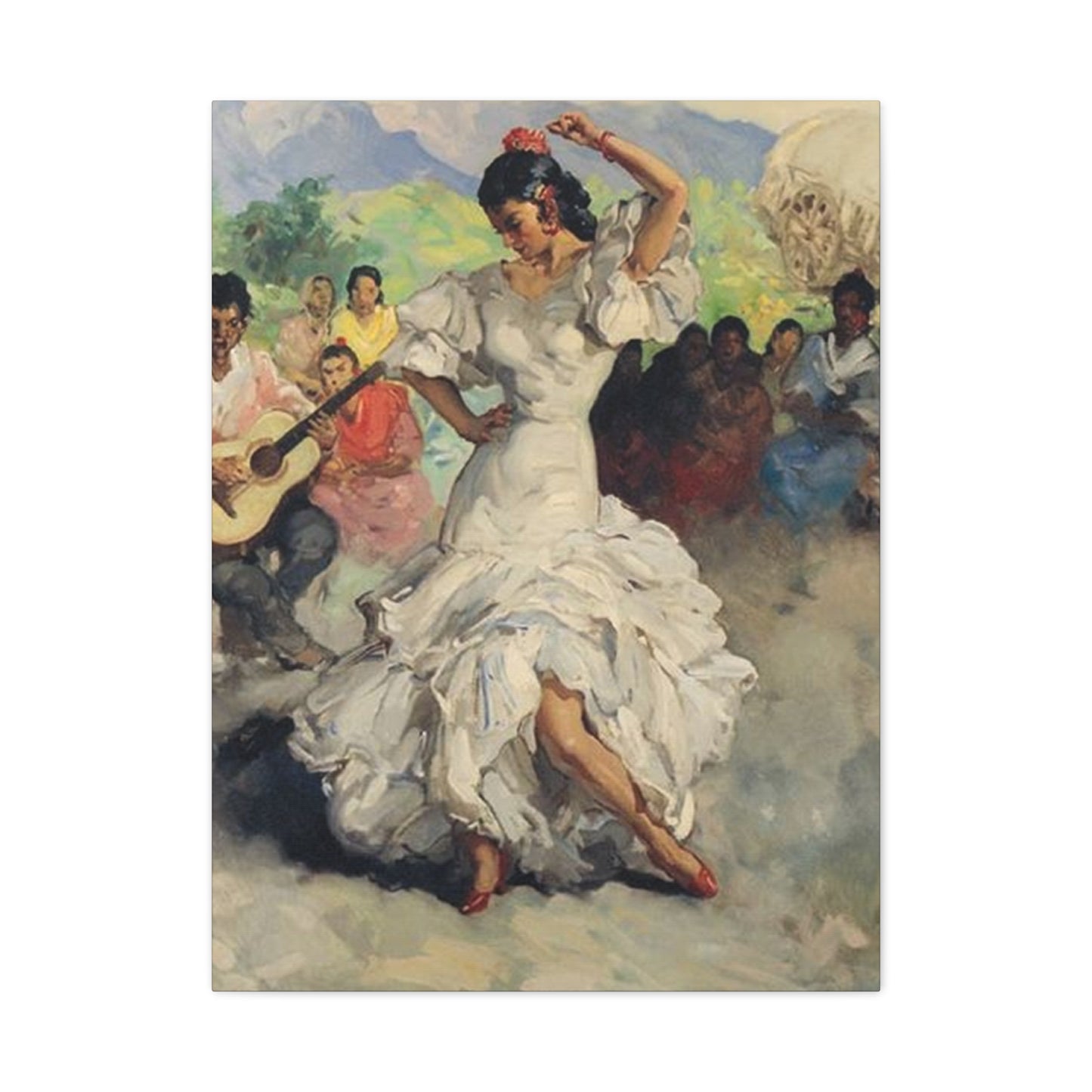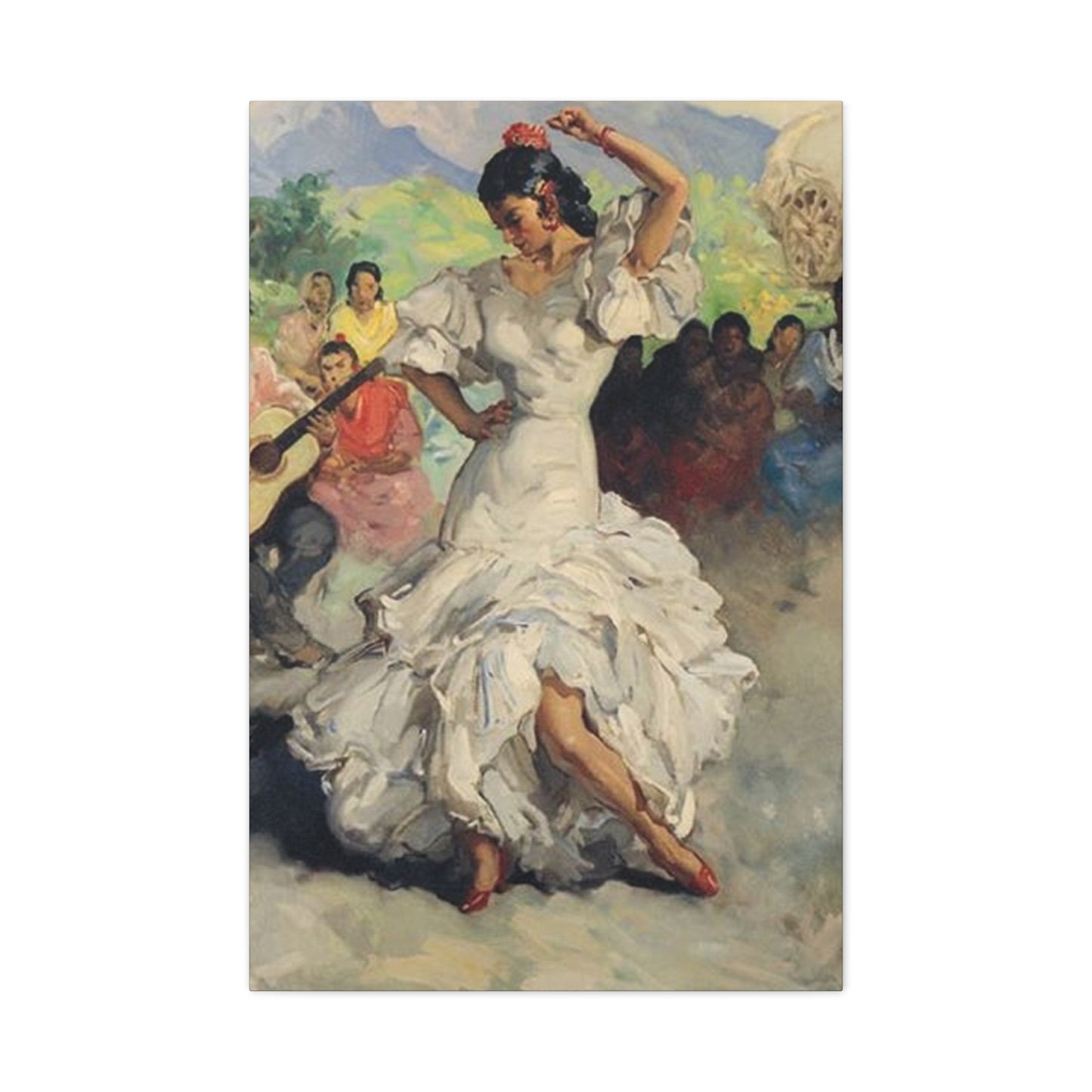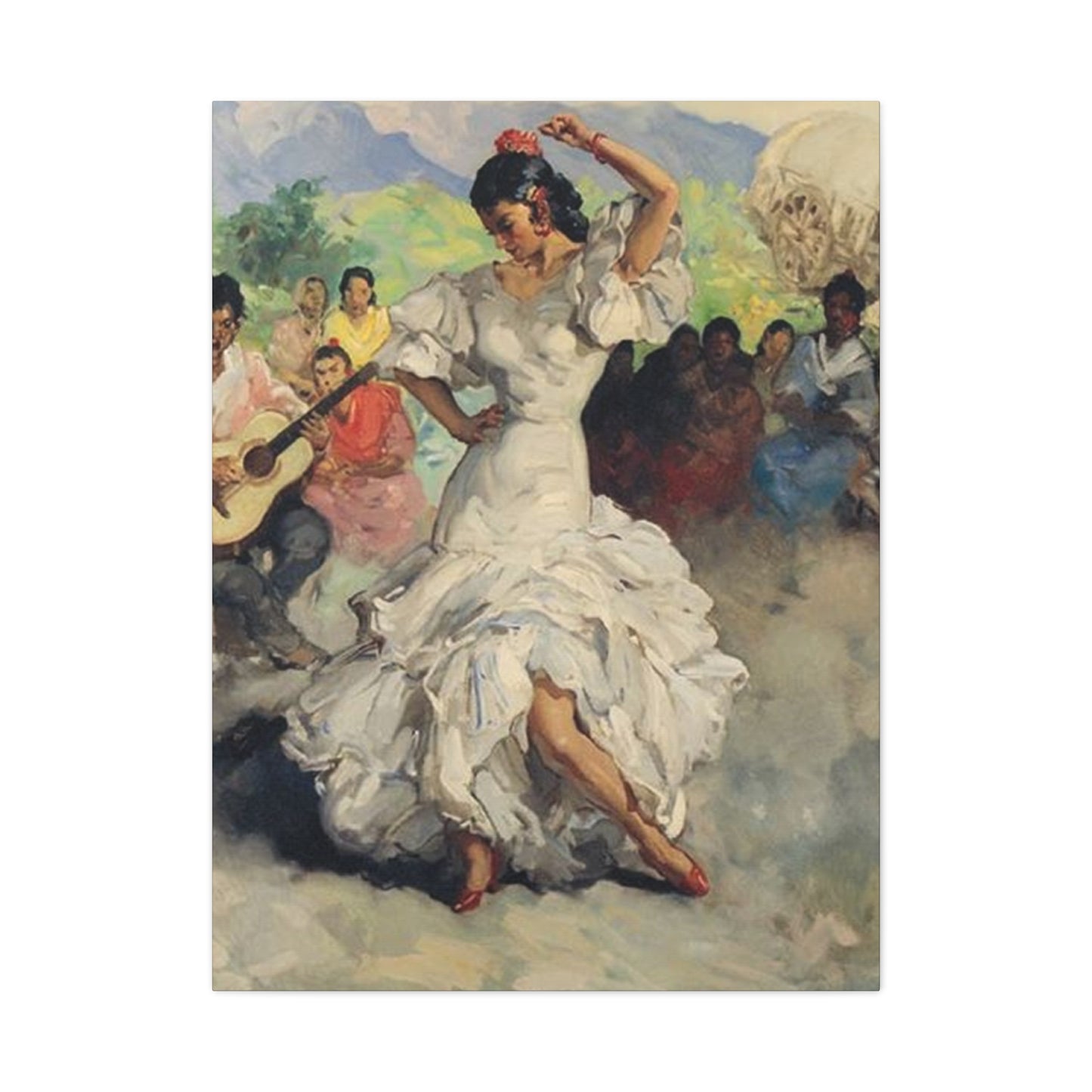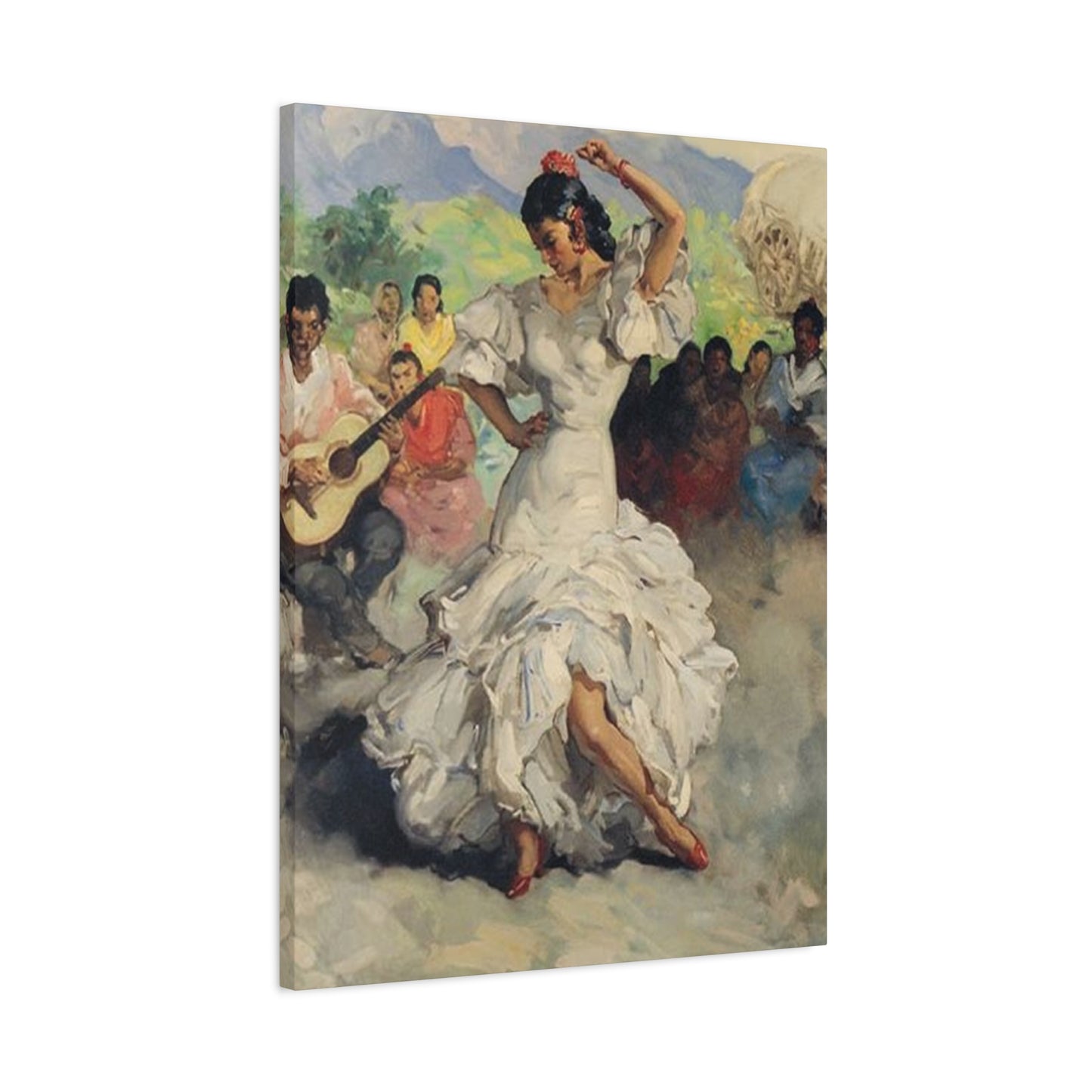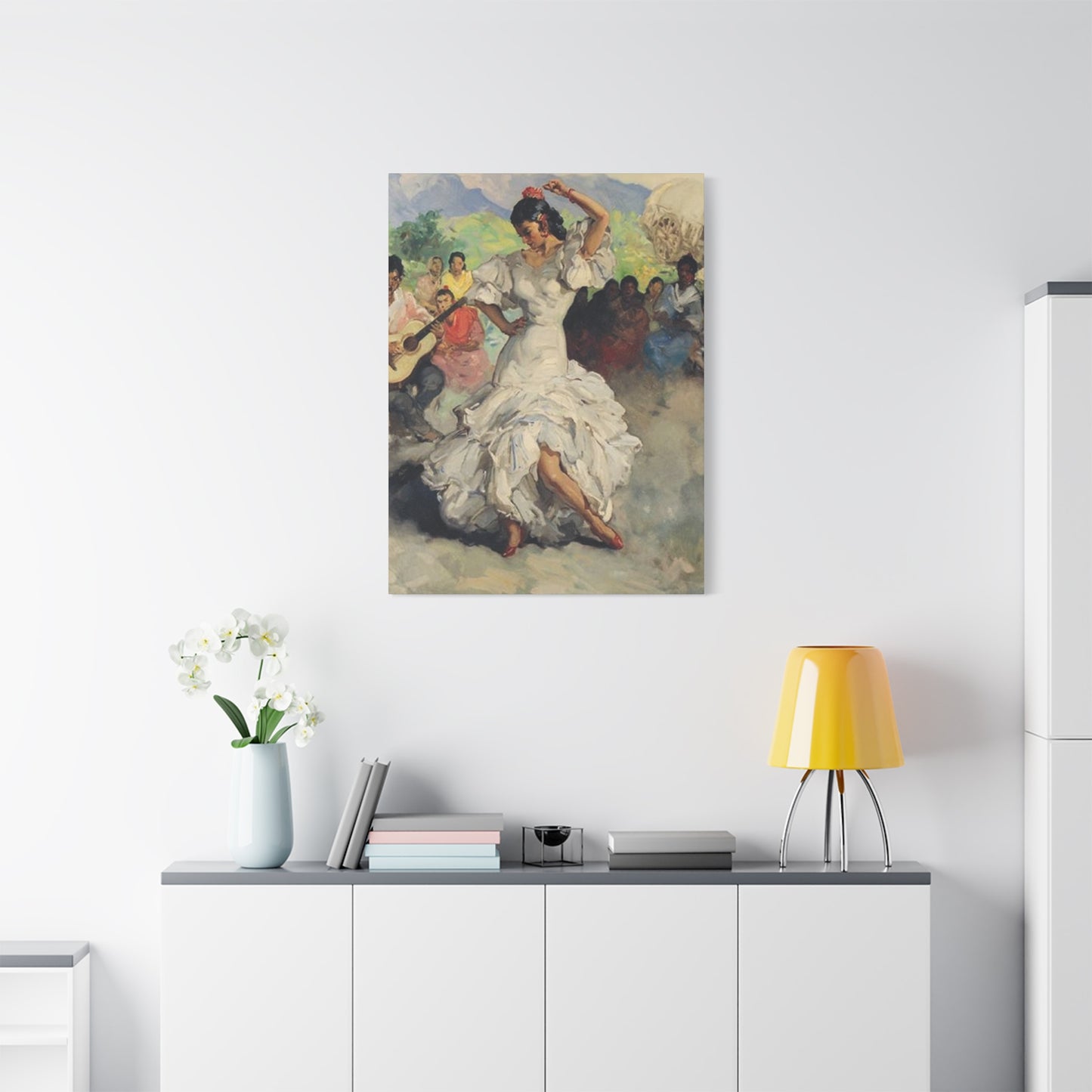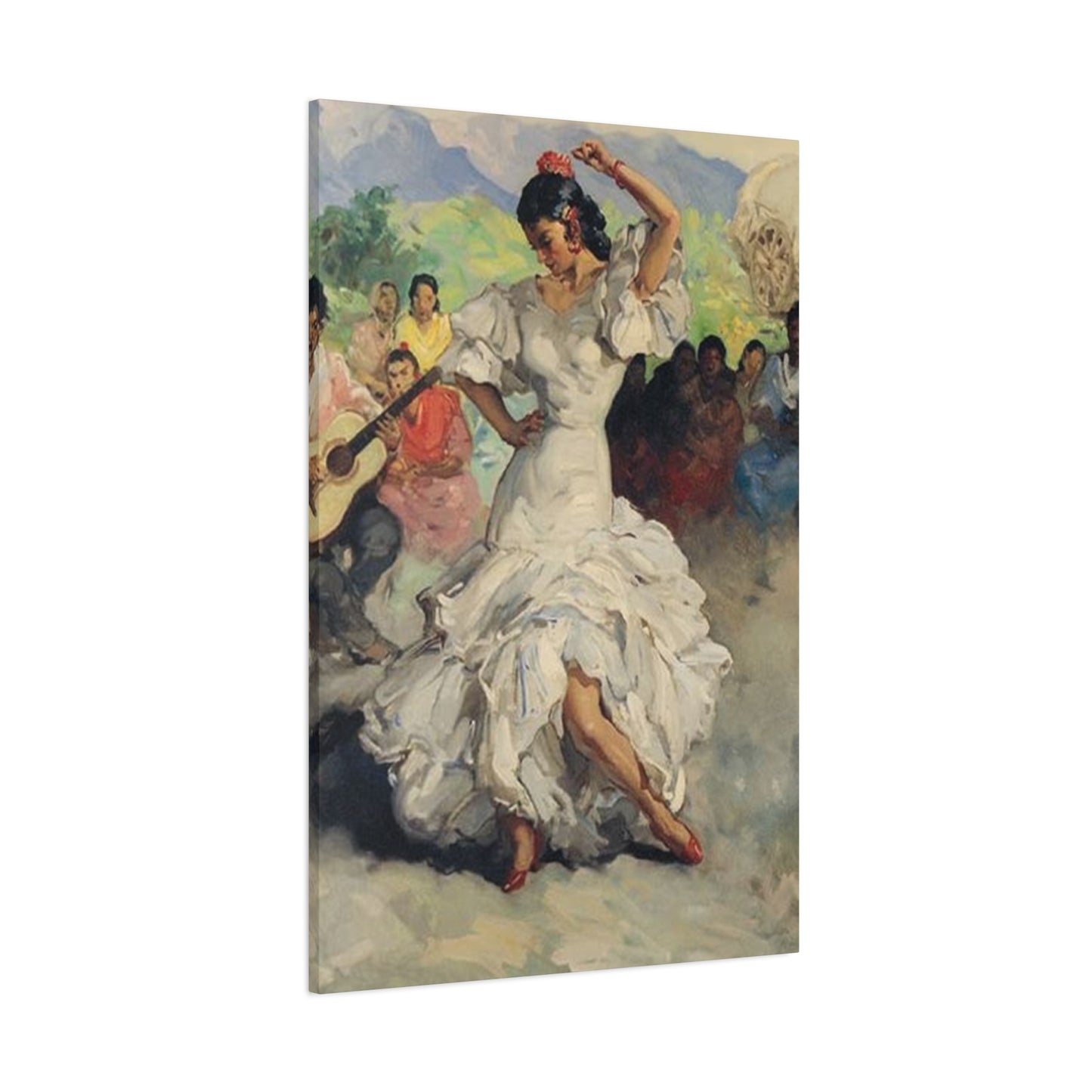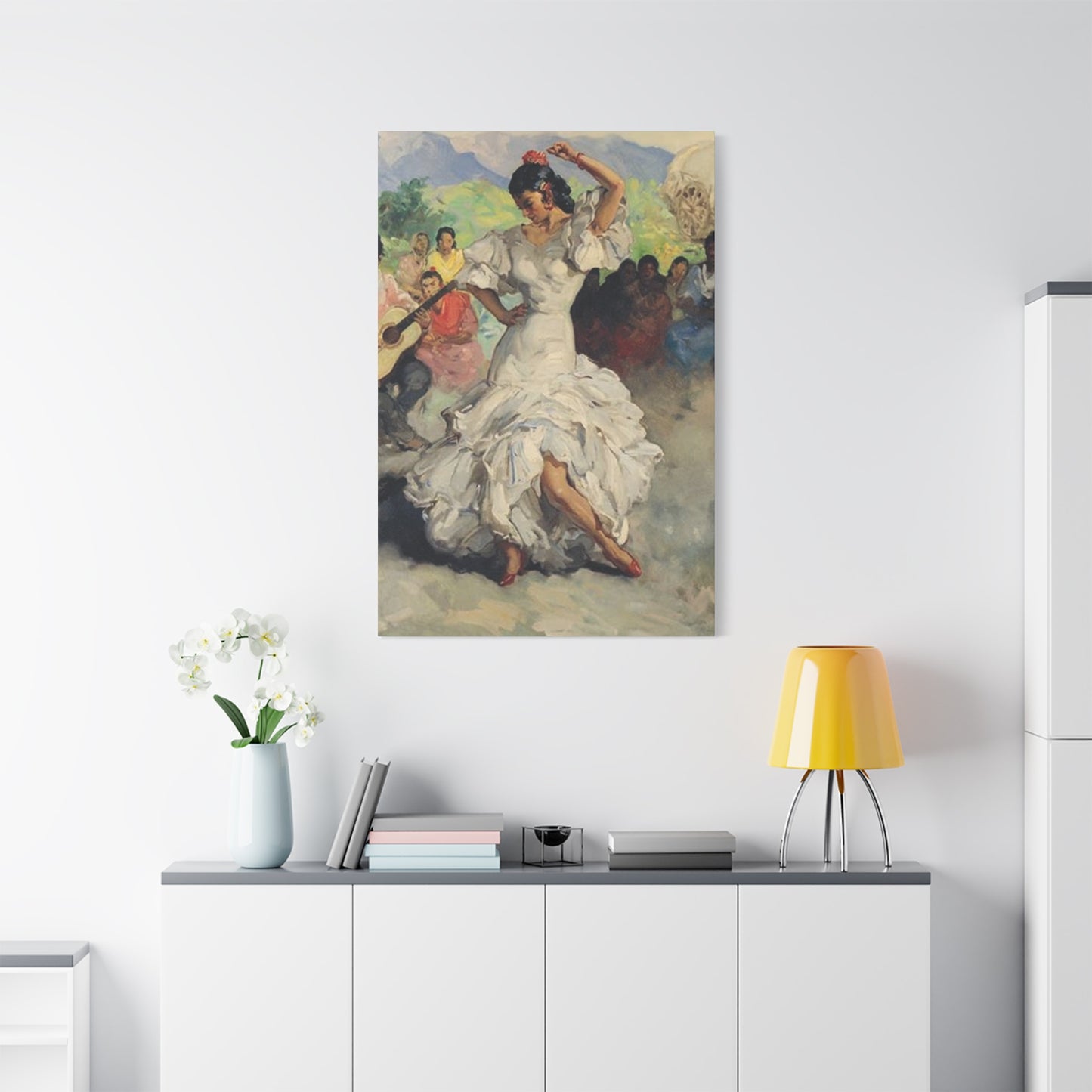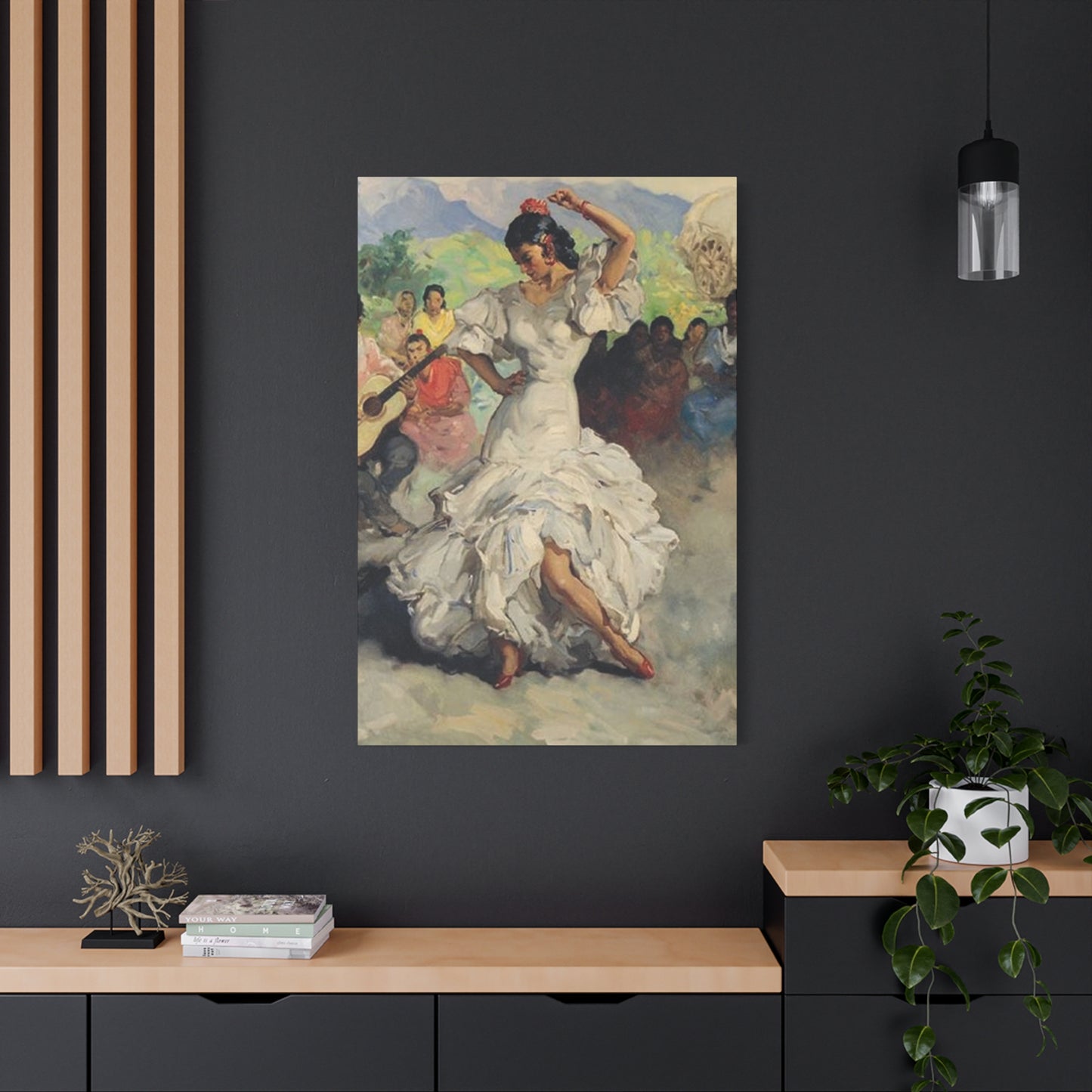Spain Traditional Dance Wall Art Canvas Prints: Vibrant Expressions of Iberian Heritage
The rich cultural tapestry of Spain has long been celebrated through its dynamic and passionate traditional dances. These mesmerizing art forms have captivated audiences worldwide for centuries, serving as a window into the soul of Spanish civilization. When translated into visual wall art through canvas prints, these dances become powerful decorative elements that bring the energy and elegance of Iberian heritage into contemporary living spaces. The intersection of traditional Spanish dance and modern canvas printing technology creates a unique category of artistic expression that appeals to both cultural enthusiasts and interior design aficionados.
Spain's traditional dances represent more than mere entertainment or physical movement. They embody the historical narratives, regional identities, and emotional landscapes of distinct Spanish communities. Each dance tells a story, carries symbolic meanings, and reflects the values of the people who created and maintained these traditions. When artists capture these dynamic movements in static visual form through canvas printing, they preserve these cultural treasures in a format that allows modern audiences to appreciate and celebrate Spanish heritage. The versatility of canvas printing technology enables creators to reproduce the vibrant colors, intricate details, and emotional intensity of these dances with remarkable fidelity.
The market for Spain traditional dance wall art canvas prints has experienced significant growth as consumers increasingly seek authentic cultural decorations for their homes and workspaces. Interior designers recognize that these canvas prints offer distinctive alternatives to mass-produced artwork, providing clients with pieces that carry cultural significance alongside aesthetic appeal. The availability of high-quality reproductions of famous paintings and illustrations featuring Spanish dancers has made this category of wall art more accessible to general audiences while maintaining the authenticity and artistic merit of the original works. This democratization of Spanish cultural art has contributed to a broader appreciation for traditional dance forms throughout the globe.
Flamenco Dance Canvas Prints: The Soul of Spanish Expression
Flamenco represents one of Spain's most iconic and internationally recognized dance forms, originating from the Andalusian region in the southern part of the country. The passionate movements, rhythmic footwork, and expressive hand gestures characteristic of flamenco create visually stunning scenes that translate beautifully into canvas artwork. When captured through photography or illustration and reproduced on canvas, flamenco dancers become dynamic focal points in interior spaces, emanating energy and sophistication. The dramatic poses of flamenco performers, often captured mid-movement with hands raised, bodies arched, and faces expressing profound emotion, provide artists with rich visual material for creating compelling wall art.
The history of flamenco dance spans centuries and reflects the complex cultural influences that have shaped Spain throughout its history. This art form developed from the fusion of various cultural traditions, including Moorish, Jewish, Roma, and Castilian influences, creating a uniquely Spanish expression of human emotion and artistic achievement. The movements associated with flamenco possess an intensity that cannot be easily replicated in other dance forms, making flamenco canvas prints particularly striking as decorative pieces. The costumes worn by traditional flamenco dancers, featuring ruffled skirts, intricate embroideries, and elegant styling, add layers of visual interest to canvas reproductions.
Contemporary artists and photographers have created numerous interpretations of flamenco dance that serve as excellent source material for canvas prints. These artworks capture various dimensions of the flamenco experience, from close-up studies of facial expressions and hand positions to full-body compositions showing dancers in their element. Some canvas prints feature single dancers in solitary performance, capturing the introspective moments of flamenco expression, while others depict group performances with multiple dancers interacting within the same composition. The diversity of available imagery ensures that consumers can find flamenco canvas prints that match their personal aesthetic preferences and interior design requirements.
The color palettes associated with flamenco-inspired canvas prints typically emphasize warm tones, deep reds, rich purples, and golden accents that evoke the passionate nature of the dance. These colors complement a wide range of interior design styles, from traditional Spanish decor to contemporary minimalist spaces seeking a cultural accent. The texture and layering of paint in quality canvas reproductions add depth and dimension to flamenco-themed artwork, creating visual interest that remains engaging upon repeated viewing. Installation of flamenco dance canvas prints in living rooms, dining areas, or entertainment spaces creates an atmosphere of elegance and cultural appreciation that impresses visitors and enriches the daily environment of residents.
Sevillanas Dance Representations in Canvas Art
Sevillanas represents another quintessentially Spanish dance form that originated in the Seville region and has become strongly associated with Spanish cultural identity and celebration. Unlike flamenco, which emphasizes individual expression and improvisation, sevillanas follows a more structured choreography featuring distinct movements and formations. The dance is traditionally performed at festivals, celebrations, and social gatherings throughout Spain, particularly during the April Fair in Seville, making it a deeply embedded element of Spanish social and cultural practice. Canvas prints depicting sevillanas dancers capture the joy, community spirit, and festive atmosphere inherent in this traditional dance form.
The visual characteristics of sevillanas create particularly appealing compositions for canvas artwork. The dance features graceful arm movements, rhythmic hip motion, and coordinated foot patterns that create flowing, elegant visual lines. Dancers often wear traditional flamenco-style clothing, including long colorful skirts, embroidered blouses, and decorative accessories that add richness to artistic representations. The typically festive context of sevillanas performances means that canvas prints featuring this dance often incorporate bright colors, celebratory elements, and cheerful atmospheres that contrast with the more somber intensity sometimes associated with flamenco imagery.
Sevillanas canvas prints are particularly popular in spaces designed to convey warmth, hospitality, and celebration. These artworks work exceptionally well in dining areas, kitchen spaces, and gathering rooms where their festive energy complements social interaction and relaxation. The dance's association with specific cultural moments and regional celebrations gives sevillanas-themed canvas art historical and contextual depth that appeals to culturally conscious consumers. Collectors of Spanish cultural art often maintain both flamenco and sevillanas representations in their collections, appreciating how each style offers different aesthetic and emotional dimensions to Spanish artistic heritage.
Jota Dance Canvas Prints and Northern Spanish Heritage
The jota represents a traditional Spanish dance form originating from the Aragon region in northeastern Spain, distinguishing itself through rapid footwork, vigorous jumping movements, and an exuberant energy quite distinct from southern Spanish dance traditions. This dance form reflects the cultural heritage of Spain's northern regions and has been passed down through generations as an essential element of regional identity and community celebration. The dynamic movements characteristic of jota create opportunities for artists to capture action and energy in canvas form, resulting in visually exciting compositions that command attention within interior spaces. The jota's association with regional pride and traditional festivities adds cultural significance to canvas representations of this dance form.
The performance of jota traditionally involves pairs of dancers executing synchronized movements with impressive acrobatic elements, including high jumps and rapid leg movements performed to distinctive musical accompaniment. The vigor and athleticism displayed by jota performers provide artists with compelling subject matter for dynamic compositions. Canvas prints depicting jota dancers often emphasize the energy and movement inherent in the performance, using compositional techniques such as diagonal lines, implied motion, and dramatic positioning to convey the dance's intensity. The traditional costumes worn during jota performances, featuring regional variations in clothing styles and decorative elements, add authenticity and cultural specificity to artistic representations.
Jota canvas prints appeal particularly to individuals with connections to Spanish regional heritage, as well as to those seeking to incorporate diverse cultural perspectives into their art collections. The dance's distinctiveness from more widely known Spanish dance forms makes jota-themed canvas art a more distinctive choice for consumers who prefer less conventional decorative options. Educational institutions, cultural centers, and organizations promoting regional Spanish heritage increasingly utilize jota canvas prints to educate and inspire audiences about the diversity and richness of Spain's cultural traditions. The athletic nature of jota performances translates well into canvas format, creating visually dynamic artworks that energize their surrounding spaces.
Sardana Circle Dance Canvas Art and Catalan Identity
The sardana represents a traditional circle dance originating from Catalonia in northeastern Spain, embodying the collective spirit and community unity central to Catalan cultural identity. Unlike solo or paired dances, the sardana involves multiple participants joining hands in a circle formation, executing coordinated movements in response to distinctive musical accompaniment. This cooperative nature of the sardana creates unique visual compositions when captured in canvas form, with multiple figures arranged in circular patterns, their connected hands forming flowing lines throughout the composition. Canvas prints depicting sardana performances celebrate community, unity, and the strength found in collective cultural expression.
The sardana has served for centuries as a cornerstone of Catalan regional identity, with performances occurring at festivals, celebrations, and gatherings throughout Catalonia and among Catalan communities worldwide. The dance's emphasis on inclusion and community participation, with people of all ages and abilities joining in circle formations, reflects values of equality and shared cultural pride. Artistic representations of sardana dancers capture these values visually, showing the interconnectedness of individuals within larger community contexts. Canvas prints featuring sardana scenes create powerful statements about the importance of cultural unity and collective heritage, making them particularly meaningful for individuals with Catalan connections or those who appreciate the deeper philosophical dimensions of cultural traditions.
The visual composition of sardana circle formations creates distinctive artistic opportunities, with the circular arrangement of dancers and the rhythmic patterns of their movements providing natural compositional elements for canvas artwork. Artists depicting sardana scenes often emphasize the geometric beauty of the circle formation while simultaneously conveying the individual personalities and expressions of participating dancers. The traditional music accompanying sardana performances, recognizable by its distinctive instrumentation and rhythmic patterns, influences the color choices and overall mood of canvas representations of this dance. Sardana canvas prints work particularly well in spaces designed to promote community feeling, social connection, and cultural appreciation.
Tarantella Connections and Spanish Mediterranean Dance Heritage
While tarantella originates from Italy and southern Mediterranean regions, its historical influence on Spanish cultural expressions and its presence in Spanish cultural contexts merit inclusion in discussions of Spanish dance canvas art. The tarantella and similar spinning, rapid-movement dances influenced some Spanish regional dance traditions, creating interesting points of cultural intersection worth exploring in visual art forms. Canvas prints depicting Spanish interpretations or Spanish performances of tarantella-inspired movements capture the broader Mediterranean cultural heritage that has shaped Spanish artistic traditions throughout history. These representations acknowledge the interconnected nature of Mediterranean cultures while celebrating specifically Spanish adaptations and variations.
The energetic spinning movements characteristic of tarantella-style dances create visually exciting compositions in canvas form, with the circular motion of dancers producing strong visual rhythms and dynamic lines. Spanish regions bordering the Mediterranean incorporated elements of these dance traditions into their own cultural practices, creating hybrid forms that reflect both local Spanish traditions and broader Mediterranean influences. Canvas prints exploring these connections serve an educational function, helping viewers understand the complex cultural history of Spain and the Mediterranean region. The vibrant colors and rapid movement captured in tarantella-influenced canvas art create energetic focal points in interior spaces.
The connection between Spanish traditions and Mediterranean dance heritage makes these canvas prints particularly valuable in spaces designed to celebrate the broader cultural context in which Spanish traditions developed. Educational institutions, cultural museums, and individuals interested in Mediterranean history and culture appreciate canvas artwork that illustrates the interconnected nature of regional traditions. The visual excitement and energy conveyed through artistic representations of tarantella-style movements contribute to the appeal of these canvas prints for individuals seeking dynamic and engaging wall art. Recognition of tarantella influences on Spanish dance traditions adds depth and context to Spanish canvas art collections.
Muñeira and Galician Dance Traditions in Canvas Form
The muñeira represents a traditional Galician dance originating from the northwestern Spanish region of Galicia, where it has been performed for centuries as an essential element of cultural identity and social celebration. This dance combines graceful circular movements, rapid footwork, and a distinctive rhythm that reflects the particular musical and cultural traditions of Galicia. Canvas prints depicting muñeira dancers capture the elegance and regional character of Galician heritage, providing visual representations of this important cultural expression. The dance's association with specific regional celebrations, festivals, and community gatherings gives muñeira-themed canvas art cultural authenticity and historical significance.
The muñeira typically involves multiple dancers arranged in circular or line formations, executing coordinated movements characterized by rotations, quick steps, and rhythmic gestures. The circular patterns created by dancers moving in synchronized formations provide compelling visual compositions for canvas artwork, with the movement and arrangement of multiple figures creating dynamic visual lines and engaging spatial relationships. Traditional muñeira performances showcase regional costumes featuring embroidered details, traditional fabrics, and decorative elements specific to Galician heritage, adding visual richness to artistic representations. Canvas prints capturing these costumes and movements preserve important elements of regional cultural expression in visual form.
Muñeira canvas art appeals particularly to individuals with Galician heritage or those interested in regional Spanish cultural diversity. The distinctive character of this northern Spanish dance tradition differentiates muñeira-themed canvas prints from more widely known Spanish dance representations, making them preferred choices for collectors seeking culturally specific artwork. Cultural organizations and educational institutions throughout Galicia and among Galician communities worldwide utilize muñeira canvas prints to maintain connections to regional heritage and celebrate the distinctive characteristics of Aragonese cultural traditions. The elegant movements and distinctive regional character of muñeira make these canvas representations valuable additions to Spanish cultural art collections.
Fandango Dance Canvas Interpretations and Historical Significance
The fandango represents one of Spain's most historically significant and widely recognized dance traditions, documented in written records and artistic works spanning several centuries. This dance form emerged in Andalusia and eventually became popular throughout Spain and in Spanish colonial territories, serving as a bridge between Spanish cultural identity and international artistic appreciation. Canvas prints depicting fandango dancers capture the historical importance and enduring appeal of this dance tradition, providing visual representations of a distinctly Spanish art form that has influenced cultural development far beyond Spanish borders. The elegance and sophistication of fandango movements create particularly refined and aesthetically appealing canvas compositions.
The fandango is characterized by rhythmic footwork, graceful arm movements, and expressive upper-body motion performed in response to distinctive musical accompaniment. The dance can be performed solo or in pairs, with variations in style and interpretation reflecting individual performer creativity and regional traditions. Artistic representations of fandango dancers often emphasize the grace and refinement of movement, capturing moments of particular expressiveness or technical virtuosity. Canvas prints featuring fandango scenes work particularly well in formal or sophisticated interior spaces, as the dance's associations with elegance and cultural refinement complement upscale decorative schemes.
Historical documentation of fandango performances by notable dancers and artistic depictions by famous painters provide rich source material for contemporary canvas reproductions. These artworks connect viewers to centuries of Spanish cultural tradition, allowing modern audiences to appreciate the continuity of artistic practice across generations. Fandango canvas prints serve educational purposes by introducing viewers to historically important Spanish cultural forms while simultaneously functioning as sophisticated decorative elements. The universality of fandango's appeal, combined with its specific Spanish cultural origins, makes fandango-themed canvas art particularly valuable in diverse interior environments.
Bolero Dance Canvas Art and Spanish Romantic Tradition
The bolero represents a Spanish dance tradition with romantic and intimate associations, emphasizing slow, controlled movements and expressive emotional content. This dance form originated in Spain and later influenced dance traditions throughout Latin America and the Caribbean, becoming a globally recognized Spanish cultural contribution. Canvas prints depicting bolero dancers capture the sensuality, grace, and emotional depth characteristic of this dance tradition, creating intimate and sophisticated wall art that enhances refined interior environments. The slow, deliberate movements of bolero allow artists to emphasize detailed body positioning, facial expressions, and emotional nuance in visual representations.
The bolero is typically performed as a paired dance, with dancers maintaining close physical proximity and executing synchronized movements that convey connection, emotion, and mutual responsiveness. The intimate nature of bolero performances provides opportunities for artists to explore themes of connection, romance, and human interaction within their visual compositions. Canvas prints depicting bolero dancers often emphasize the emotional relationship between performers, capturing moments of particular tenderness or intensity. The traditional music accompanying bolero performances, characterized by distinctive rhythm and instrumentation, influences color choices and overall mood in artistic representations of this dance.
Bolero canvas prints work particularly well in bedroom environments, intimate dining spaces, or other areas designed to promote relaxation and emotional connection. The sensual and romantic nature of bolero-themed canvas art makes these prints popular choices for couples or individuals seeking to enhance their living environments with culturally significant artwork that reflects romantic themes. The technical skill demonstrated by bolero dancers, with their precise footwork and controlled movements, provides artists with opportunities to showcase detailed technical representation in canvas form. Educational institutions and dance centers utilize bolero canvas prints to teach audiences about this important Spanish dance tradition and its influence on global dance practices.
Pasodoble Canvas Representations and Spanish Passion
The pasodoble stands out as a Spanish dance tradition with particularly theatrical and dramatic characteristics, often performed in festive contexts and cultural celebrations throughout Spain. This dance is recognizable by its sharp, decisive movements, dramatic arm gestures, and the distinctive march-like rhythm accompanying performances. Canvas prints depicting pasodoble dancers capture the theatrical drama and passionate energy characteristic of this dance form, creating visually compelling wall art that commands attention within interior spaces. The bold, dynamic nature of pasodoble movements translates particularly well into canvas format, producing artworks with strong visual impact.
The pasodoble is traditionally performed by pairs of dancers, with one dancer assuming the role of the matador and the other representing the cape. This theatrical framing of the dance creates opportunities for artists to explore themes of conflict, control, and dramatic tension within visual compositions. Canvas prints depicting pasodoble performances often emphasize the sharp lines created by body positioning, the intensity of facial expressions, and the dramatic contrast between light and shadow in the compositional space. The traditional costumes worn during pasodoble performances, featuring elaborate embroidery, decorative elements, and theatrical styling, add richness and visual interest to artistic representations.
Pasodoble canvas art appeals to individuals seeking dynamic, attention-commanding wall art that reflects Spanish cultural passion and theatrical tradition. The drama and energy conveyed through pasodoble-themed canvas prints make these artworks particularly effective in entertainment spaces, performance studios, or other areas where dynamic visual impact is desired. The connection between pasodoble and Spanish bullfighting traditions adds layers of cultural and historical context to artistic representations of this dance. Museums, cultural centers, and individuals passionate about Spanish theatrical traditions increasingly incorporate pasodoble canvas prints into their collections and display spaces.
Cachirulo and Regional Spanish Dance Variations in Canvas
The cachirulo represents a traditional Spanish dance from the Aragon region, characterized by rhythmic movements performed with a handkerchief held in one hand, which becomes an integral element of the dance's visual aesthetic. This distinctive prop creates unique compositional opportunities for artists, as the flowing fabric of the handkerchief adds movement and visual interest to representations of the dance. Canvas prints depicting cachirulo dancers capture the playful energy and regional character of this Aragonese tradition, providing visual representations of a less internationally recognized but culturally significant Spanish dance form. The incorporation of the handkerchief as a visual element distinguishes cachirulo-themed canvas art from other Spanish dance representations.
The movements characteristic of cachirulo include rapid footwork, hip motion, and arm gestures that coordinate with the manipulation of the handkerchief, creating complex and visually interesting compositions for artistic representation. Dancers traditionally wear regional costumes featuring styles and decorative elements specific to Aragon, with the handkerchief often coordinated with or complementing the overall costume aesthetic. Canvas prints capturing these details preserve important visual elements of regional cultural expression while celebrating the distinctive character of Aragonese heritage. The playful and celebratory nature of cachirulo performances translates into joyful and energetic canvas artwork.
Cachirulo canvas prints appeal to individuals with connections to Aragonese heritage, collectors of Spanish regional dance traditions, and those seeking distinctive and culturally specific wall art. The lesser-known status of cachirulo compared to more widely recognized Spanish dances makes cachirulo-themed canvas prints valuable for collectors seeking to build comprehensive representations of Spanish cultural diversity. Educational institutions and cultural organizations throughout Aragon utilize cachirulo canvas prints to maintain connections to regional heritage and celebrate the distinctive characteristics of Aragonese cultural traditions. The visual interest created by the handkerchief element in cachirulo representations provides artistic variety within broader Spanish dance canvas art collections.
Villanesca and Early Spanish Dance Heritage in Canvas Art
The villanesca represents an early Spanish dance tradition with historical roots extending back to medieval times, making it an important element of Spain's cultural heritage and artistic history. This dance form connects contemporary Spanish cultural practices to centuries of cultural tradition, providing continuity between past and present. Canvas prints depicting villanesca dancers serve educational purposes by introducing audiences to early Spanish cultural expressions while simultaneously functioning as historically significant decorative elements. The distinct characteristics of villanesca movements and styling differentiate this historical dance from more modern Spanish traditions.
The villanesca is characterized by structured choreography, specific movement patterns, and musical accompaniment that reflect the cultural aesthetics and artistic values of medieval and early modern Spain. Canvas representations of villanesca performances capture the formality and structured nature of this historical dance tradition, often emphasizing the precise positioning and coordinated movements of participating dancers. The costumes worn during villanesca performances reflect the fashion and artistic sensibilities of historical periods, providing artistic material rich in historical context and cultural significance. Artists depicting villanesca scenes often emphasize the historical character of the dance through costume details, compositional arrangements, and overall artistic approach.
Villanesca canvas art appeals to history enthusiasts, scholars of Spanish cultural traditions, and individuals interested in early European dance practices. These prints serve important functions in educational contexts, helping audiences understand the historical development of Spanish dance traditions and their evolution over centuries. Museums and cultural institutions dedicated to preserving Spanish heritage increasingly incorporate villanesca canvas prints into historical exhibitions and educational displays. The connection between villanesca and broader European medieval dance traditions adds depth and international context to understanding Spanish cultural development.
Regional Variations and Diversity in Spanish Dance Canvas Art
Spain's geographic and cultural diversity has given rise to numerous regional dance traditions, each reflecting the particular history, values, and artistic sensibilities of specific Spanish communities. Canvas prints celebrating regional variations in Spanish dance traditions provide opportunities to explore this cultural diversity while simultaneously appreciating the interconnected nature of Spanish national identity. From the distinct styles found in Catalonia, Galicia, and the Basque country to regional variations in Andalusian, Aragonese, and Castilian traditions, the breadth of Spanish dance heritage provides rich material for contemporary artistic expression and canvas reproduction. Recognition and celebration of regional dance traditions through canvas art contribute to preservation and appreciation of Spain's cultural richness.
Contemporary artists and photographers continue to create new interpretations of regional Spanish dance traditions, ensuring that canvas art materials remain fresh and diverse. These contemporary artistic approaches combine respect for traditional forms with modern artistic sensibilities, creating canvas prints that appeal to both traditionalists and those seeking contemporary interpretations of cultural heritage. The availability of multiple artistic interpretations of the same dance traditions allows consumers to select canvas prints that match their personal aesthetic preferences while maintaining cultural authenticity. Regional cultural organizations and tourism boards increasingly commission contemporary artists to create canvas representations of local dance traditions for educational, promotional, and preservation purposes.
The diversity of regional Spanish dance traditions represented in canvas format encourages viewers to appreciate the complexity and richness of Spanish cultural heritage. Educational programs utilize regional dance canvas prints to teach audiences about Spain's geography, history, and cultural development. Interior designers incorporate representations of multiple regional dance traditions into decorative schemes that celebrate Spanish cultural diversity and international appeal. The growing appreciation for regional Spanish dance traditions, reflected in increasing availability of diverse canvas print options, demonstrates the expanding recognition of Spain's cultural complexity and the value of preserving and celebrating regional artistic expressions.
Artistic Techniques in Spanish Dance Canvas Reproduction
The process of creating high-quality canvas prints from Spanish dance artwork involves sophisticated technical procedures designed to preserve artistic detail, color accuracy, and compositional integrity. Professional printing facilities utilize advanced scanning technology to capture original artwork at high resolution, ensuring that every detail of the original painting, photograph, or illustration is available for reproduction. The selection of appropriate canvas materials, inks, and printing methods significantly influences the quality and longevity of finished canvas prints. Understanding the technical considerations in canvas print production helps consumers make informed decisions about canvas purchases and appreciate the craftsmanship involved in creating quality wall art.
Pigment-based inks represent the preferred standard for professional canvas printing, offering superior color vibrancy, longevity, and resistance to fading compared to alternative ink types. These specially formulated inks are designed to adhere effectively to canvas surfaces while maintaining color accuracy across the full color spectrum. The layering of multiple ink colors in precise proportions reproduces the original artwork's color relationships and visual complexity. Professional color management practices ensure that canvas prints accurately represent the original artwork, with specialized equipment and calibration procedures maintaining consistency across multiple print runs.
The selection of canvas material significantly influences the visual appearance and tactile qualities of finished prints. High-quality canvas typically features tight weaves and consistent texture that complements rather than overwhelms printed imagery. The choice between matte and glossy canvas finishes influences how light interacts with the printed surface and affects the perceived color vibrancy and visual presence of the artwork. Many contemporary canvas prints combine matte canvas bases with specialized coating techniques that enhance color depth while protecting the printed surface from environmental damage. Understanding these technical considerations enables consumers to select canvas prints that meet their specific aesthetic preferences and performance requirements.
Color Theory and Emotional Impact in Spanish Dance Canvas Art
The emotional power of Spanish dance canvas art depends significantly on the use of color to convey mood, energy, and cultural meaning. Artists depicting Spanish dances deliberately select color palettes that enhance the emotional content of their compositions, creating artworks that communicate specific feelings and cultural associations. The warm tones traditionally associated with Spanish artistic traditions, including deep reds, golden yellows, and earthy browns, evoke passion, warmth, and cultural authenticity. Understanding how color choices influence emotional response helps viewers appreciate the intentional design decisions in Spanish dance canvas artwork.
Flamenco and pasodoble representations typically feature dramatic color contrasts, with deep reds, blacks, and golds creating a sense of passion and intensity. These color combinations evoke the emotional power associated with flamenco performance and the theatrical nature of these dance traditions. Conversely, sevillanas and festive dance representations often incorporate brighter colors, including vibrant reds, blues, and yellows that convey celebration, joy, and social connection. The color choices in canvas representations of these different dance traditions reinforce the emotional and cultural associations viewers have with each specific dance form.
The psychology of color influences how viewers respond to Spanish dance canvas art at both conscious and subconscious levels. Cool colors, while less common in traditional Spanish dance representations, can create interesting contrasts and add contemporary aesthetic appeal to canvas artwork. Artists creating canvas representations of Spanish dances carefully consider how their color choices will interact with typical interior environments, selecting palettes that complement common wall colors and decorative schemes. The versatility of Spanish dance canvas art partly derives from the diversity of available color palettes, allowing consumers to select prints that harmonize with their existing interior aesthetics while maintaining cultural authenticity.
Composition and Visual Dynamics in Spanish Dance Canvas Prints
Effective Spanish dance canvas artwork requires careful compositional planning to create visually engaging and balanced artworks that command attention within interior spaces. Artists depicting Spanish dancers face the challenge of capturing movement and energy in static visual form, necessitating strategic compositional choices that convey motion, emotion, and vitality despite the absence of actual movement. The placement of figures within the compositional space, the use of diagonal lines to suggest motion, and the emphasis of key focal points all contribute to the visual impact and effectiveness of Spanish dance canvas art.
The positioning of dancers within the compositional frame significantly influences the energy and emotional tone of canvas artwork. Off-center positioning, achieved through compositional techniques such as the rule of thirds, creates visual interest and dynamic tension that draws viewer attention throughout the composition. The use of implied motion, achieved through body positioning and gesture that suggests movement continuing beyond the frame's boundaries, enhances the sense of energy and vitality in canvas representations of Spanish dances. Artists skilled in compositional techniques create canvas artwork that feels alive and engaging rather than static or staged.
The relationship between figure and ground in Spanish dance canvas art influences how effectively the artwork communicates movement and emotion. Backgrounds ranging from neutral tones that emphasize the dancer to richly detailed environments that provide cultural context serve different artistic purposes and suit different decorative applications. Contemporary canvas art often employs dramatic lighting, with bright highlights and deep shadows that emphasize the three-dimensional form of dancers and add visual sophistication to canvas artwork. These compositional and lighting techniques transform simple representations of dancers into complex, emotionally resonant artworks that maintain viewer engagement through repeated observation.
Historical Documentation in Spanish Dance Canvas Art
The historical significance of Spanish dance traditions makes accurate artistic representation particularly important for canvas artwork intended to serve educational as well as decorative purposes. Artists creating canvas representations of Spanish dances often research historical documentation, including written descriptions, musical recordings, photographic materials, and other visual records to ensure that their artistic interpretations respect historical accuracy while allowing for creative expression. This combination of historical research and artistic creativity results in canvas artwork that simultaneously serves as historically informed cultural representation and visually compelling decorative art.
Historical photographs and records documenting famous Spanish dancers, legendary performances, and significant cultural moments provide valuable reference material for contemporary artists creating canvas representations of Spanish dance traditions. These historical documents often reveal specific details about costume construction, jewelry, footwear, and other elements of performance appearance that contribute to the authenticity and cultural significance of artistic representations. The availability of historical materials has increased substantially through digital archives and museum collections, enabling contemporary artists to create informed and detailed representations of historical dance traditions. Canvas prints based on careful historical research serve educational functions while maintaining the visual appeal and contemporary relevance of artwork.
The evolution of Spanish dance traditions across historical periods creates opportunities for artists to explore how specific dance forms have changed and developed over time. Canvas artwork depicting historical periods in the development of particular dance traditions illustrates cultural change and continuity, providing visual narratives of how Spanish artistic traditions have adapted and persisted. Educational institutions and cultural organizations utilize historically informed canvas artwork to teach audiences about the complex history of Spanish cultural traditions. The commitment to historical accuracy in canvas artwork distinguishes culturally serious artistic representations from superficial or stereotyped depictions.
Photography and Modern Interpretation in Spanish Dance Canvas
Contemporary photographers have brought new perspectives to visual documentation of Spanish dance traditions, capturing performances, dancers, and cultural moments through modern photographic techniques that contemporary canvas printing can reproduce with remarkable fidelity. Professional photography of flamenco performances, regional dance festivals, and individual dancer portraits provides source material for canvas prints that showcase the authentic beauty and energy of living dance traditions. The immediacy and realism of photographic documentation combined with the aesthetic appeal of canvas printing creates artworks that bridge contemporary visual culture and traditional artistic heritage.
Modern dance photographers employ sophisticated equipment, lighting techniques, and compositional approaches to create visually striking images of Spanish dance performances and dancers. Action photography capturing dancers mid-leap, at moments of particular expression, or in dynamic configuration creates canvas artwork with remarkable visual impact and energy. Portraiture of renowned dancers, capturing their presence and skill, provides another important category of photographic source material for canvas reproduction. The technical excellence of contemporary photography combined with the interpretive skill of photographers results in canvas artwork that represents the highest quality visual documentation of Spanish dance traditions.
The use of color photography in capturing Spanish dance traditions allows canvas prints to preserve the actual colors of traditional costumes, performance environments, and lighting conditions during live performances. The authenticity and immediacy of photographic documentation combined with the artistic enhancement available through professional printing and canvas reproduction creates particularly compelling wall art. Contemporary photographers specializing in Spanish cultural documentation contribute significantly to the preservation and appreciation of these traditions by creating visual records that can be reproduced in canvas form and made available to global audiences. The relationship between photography, canvas printing technology, and audience appreciation of Spanish dance traditions continues to evolve and deepen.
Interior Design Integration of Spanish Dance Canvas Art
The successful incorporation of Spanish dance canvas art into interior environments requires consideration of multiple design factors, including scale, color coordination, spatial arrangement, and thematic coherence with existing decorative elements. Interior designers recognize that Spanish dance canvas prints offer distinctive opportunities to introduce cultural authenticity and visual drama into living spaces while serving as focal points that organize and define room aesthetics. The versatility of Spanish dance canvas art allows integration into diverse design schemes, from traditional Spanish interiors that celebrate cultural heritage to contemporary minimalist spaces seeking cultural accent pieces.
The selection of appropriate canvas print sizes significantly influences the visual impact and effectiveness of Spanish dance artwork in interior environments. Large-scale canvas prints create dramatic focal points that command attention and define room character, while smaller prints work effectively in gallery arrangements or as secondary decorative elements. The spatial characteristics of specific rooms, including ceiling height, wall dimensions, and architectural features, influence optimal canvas sizing decisions. Professional interior designers utilize visualization techniques to help clients understand how specific canvas prints will appear in their actual spatial environments, enabling informed purchasing decisions.
Color coordination between canvas artwork and existing interior elements creates cohesive and aesthetically pleasing decorative schemes. Spanish dance canvas prints with warm color palettes complement traditional interior styles featuring wood furnishings, earth-tone walls, and cultural decorative elements. These same warm tones work equally effectively in contemporary interiors seeking cultural counterpoints to modern aesthetic minimalism. The versatility of color options available through diverse Spanish dance canvas prints ensures that consumers can find artworks that harmonize with nearly any interior color scheme. The dramatic visual presence of many Spanish dance representations allows the canvas art itself to serve as the primary decorative focus, with surrounding elements supporting rather than competing with the artwork.
Gallery Wall Arrangements with Spanish Dance Canvas
The creation of gallery walls featuring multiple Spanish dance canvas prints offers opportunities for comprehensive cultural representation and sophisticated interior design approaches. Gallery walls consisting of various sizes and styles of Spanish dance artwork create visually complex and engaging displays that encourage extended viewer attention and appreciation. The arrangement of multiple canvas prints representing different dance traditions creates visual narratives that educate viewers about the diversity and richness of Spanish cultural heritage. Professional designers and enthusiastic collectors increasingly create gallery walls as primary decorative focal points in significant spaces within their homes.
The principles of gallery wall design, including balance, rhythm, and visual flow, apply equally to arrangements of Spanish dance canvas art as to other types of artwork. The spacing between individual canvas prints, the choice to use matching or varied frame styles, and the overall geometric organization of the arrangement significantly influence the visual effectiveness of gallery wall installations. The successful gallery wall arrangement considers both the individual qualities of each canvas print and the collective visual impact created by the arrangement as a unified composition. The flexibility of canvas print sizes and formats enables designers to create gallery walls adapted to specific spatial dimensions and design preferences.
Thematic gallery walls devoted exclusively to particular dance traditions or regional variations create focused visual statements about specific aspects of Spanish cultural heritage. A gallery wall devoted to flamenco traditions might include canvas prints representing different aspects of flamenco performance, from full-body dancer poses to close-up studies of hands and expressions. Alternatively, a regional gallery wall might celebrate the dance traditions of a specific Spanish region, presenting the diversity of cultural expression found within that geographic area. The educational and aesthetic benefits of thematic gallery arrangements make these approaches increasingly popular among culturally conscious collectors and interior designers.
Customization Options and Personalized Spanish Dance Canvas Art
The availability of customization services for Spanish dance canvas prints enables consumers to create personalized artwork reflecting their specific aesthetic preferences, cultural interests, and spatial requirements. Professional printing services increasingly offer options for resizing canvas prints, adjusting colors or saturation levels, cropping compositions, and combining multiple images into single composite artworks. These customization capabilities allow consumers to create truly unique and personalized canvas art that reflects their individual relationships with Spanish dance traditions and their aesthetic vision for their living spaces.
Digital image editing capabilities enable contemporary artists and printing services to create variations on existing Spanish dance imagery, adapting compositions to fit specific size requirements or spatial configurations. The ability to adjust color saturation, convert color images to grayscale or sepia tones, or add artistic effects allows customization that reflects individual aesthetic preferences. Some printing services offer consultation with professional designers to help customers make customization decisions that result in artwork optimally suited to their interior environments. This personalization capability transforms Spanish dance canvas art from mass-produced commodities into individually tailored artistic expressions.
Commissioned canvas artwork featuring Spanish dancers represents another customization approach, with artists creating original compositions based on client specifications. Customers commissioning custom canvas art work with artists to define desired dance traditions, specific compositional elements, color schemes, and size specifications, resulting in entirely original artworks created specifically for their spaces. The investment involved in commissioning custom work typically exceeds the cost of reproductions, but the resulting unique and personalized artwork justifies the expense for clients seeking truly distinctive artistic statements. The commissioning process often involves extensive collaboration between artist and client, resulting in artworks that authentically reflect the client's cultural interests and aesthetic vision.
Conclusion
In conclusion, “Spain Traditional Dance Wall Art Canvas Prints: Vibrant Expressions of Iberian Heritage” beautifully showcases how art can be a powerful medium for celebrating and preserving cultural identity. These canvas prints capture the passion, elegance, and vibrant energy of Spain’s traditional dances, offering more than just decoration—they bring a rich narrative of Iberian heritage into modern living spaces.
Spanish traditional dance is renowned worldwide for its expressive movements, colorful costumes, and deep-rooted symbolism. Through canvas prints, the swirling skirts, intricate details, and dynamic postures of dancers are immortalized, allowing viewers to experience the spirit and intensity of these cultural performances every day. The bold colors and textures featured in these artworks create a striking visual impact, transforming any room into a lively tribute to Spain’s artistic traditions.
These wall art pieces do more than beautify interiors—they connect us to the stories and emotions behind the dances. Whether it’s flamenco’s fiery passion, the joyful rhythms of regional folk dances, or the graceful gestures that convey centuries of history, each print tells a unique tale. This connection to cultural heritage enriches the atmosphere of a space, fostering appreciation and respect for Spain’s diverse artistic legacy.
From a design perspective, canvas prints of traditional Spanish dance art are versatile and adaptable. They complement a variety of décor styles, from rustic Mediterranean-inspired rooms to sleek contemporary spaces. The vibrancy of the artwork brings warmth and life, while the cultural significance adds depth and meaning. These prints serve as conversation starters and cultural ambassadors, inviting guests to engage with the rich traditions of the Iberian Peninsula.
Moreover, investing in Spain traditional dance wall art supports artists and preserves cultural craftsmanship, ensuring these stories and styles continue to inspire future generations. The tactile quality of canvas prints also enhances the sensory experience, making the art feel alive and immersive.
Ultimately, Spain traditional dance wall art canvas prints are a celebration of movement, color, and cultural pride. They offer a timeless way to honor Iberian heritage while enriching modern interiors with beauty and meaning.In essence, these vibrant expressions of Spain’s traditional dance culture transform spaces into lively showcases of history, artistry, and passion—making every wall a canvas of celebration.

















